"The muntjac came in and walked away with three people. ”
In the last century, there used to be such a legend in the villages in the mountainous areas of southern my country - if a muntjac (jǐ) enters your house, you cannot scare or beat it, let alone Catch them and eat them. As the saying goes, "when a muntjac comes in, three people will be taken away".
If the muntjac who entered the door immediately left on his own, it would be no big deal, but at most the family would be in some bad luck. But if the muntjac stays at home, there will definitely be a bloody disaster before long.
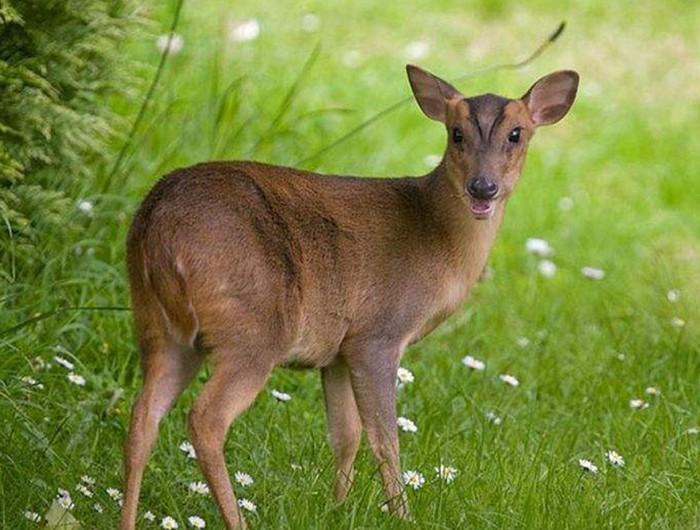
Wild female muntjac
However, even if everyone believes in such a legend, it does not prevent villagers from catching muntjacs in the wild for a feast.
At that time, there was a tacit understanding between the mountain people and nature - "Yingkou does not make a living". They could hunt occasionally, but they would not hunt and kill them indiscriminately for trading. And the muntjac meat was not sold for a long time. It has become an excellent gift for mountain folk visiting relatives and friends.
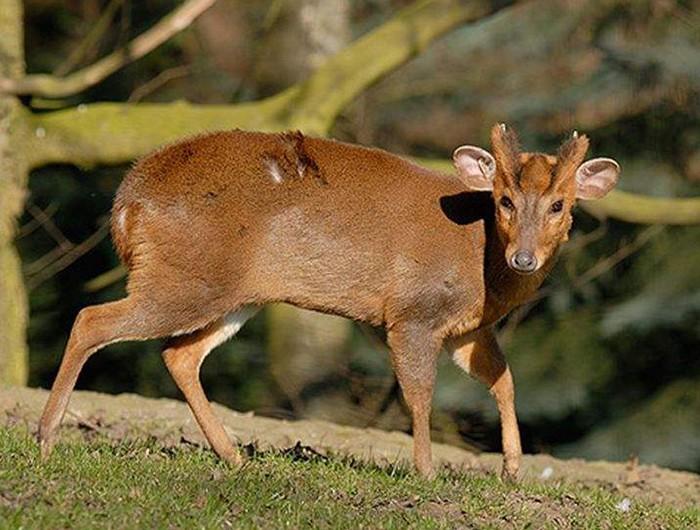
Wild male muntjac
As you can see in the photo, the muntjak is a very cute animal and a deer species unique to China. This deer-like animal can often be seen in the mountains and forests south of the Yangtze River.
The "muntjac" as it is collectively known among the people is classified into the genus Cervidae in modern animal classification. There are four species in China. Among them, the black muntjac is a national first-level protected wild animal with a sparse wild population; It was only on March 18 that the first images of live animals in the wild were captured in the Medog region of Tibet. Before that, there were only specimen data in the country.
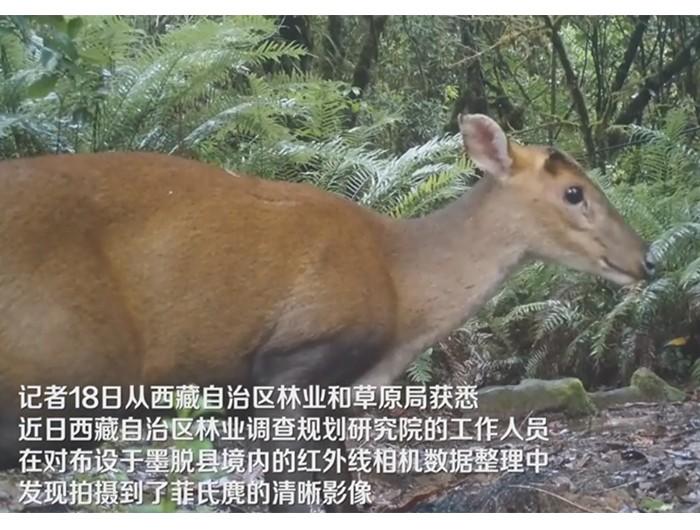
Screenshot of Xinhua News Agency’s news report on May 18, 2022
Therefore, the common muntjac refers to the two most common types: "red muntjac" and "little muntjac". Among them, the red muntjac is the largest type of muntjac, and is also called Indian muntjac and yellow muntjac (jīng); The little muntjac is the smallest of the muntjacs.
Because of its petite size, about the same size as a dog, the small muntjac is also called "dog muntjac"; because it looks like a deer and barks like a dog, it is also named "barking deer"; in Taiwan Province, it is called "shanqiang (qiāng)" , in addition, there are also titles such as yellow muntjac and horned muntjac.
These various folk names also confirm the distribution and history of muntjac animals in the country, which can be seen by reading history books. Whether it is the "Book of Songs Erya" and "The Classic of Mountains and Seas" written in BC, or the ancient encyclopedias "Compendium of Materia Medica" and "Tiangong Kaiwu", as well as history books of various dynasties, and even essays and novels by ancient famous officials such as "Taiping Guangji" etc. It is mentioned in ancient books.
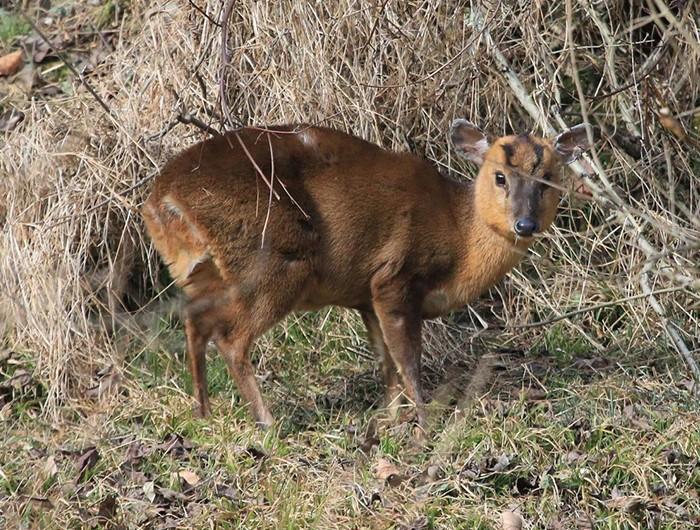
Wild muntjac in Tangjiahe Nature Reserve, Sichuan
Either they were hunted with deer, wild deer, or rabbits, or suede was made into clothing for trade and tribute. The "suede" we often buy when buying clothes now is a special leather craft made from pigs. Imitation leather material made of cow, sheepskin or synthetic materials that imitates the feel of suede.
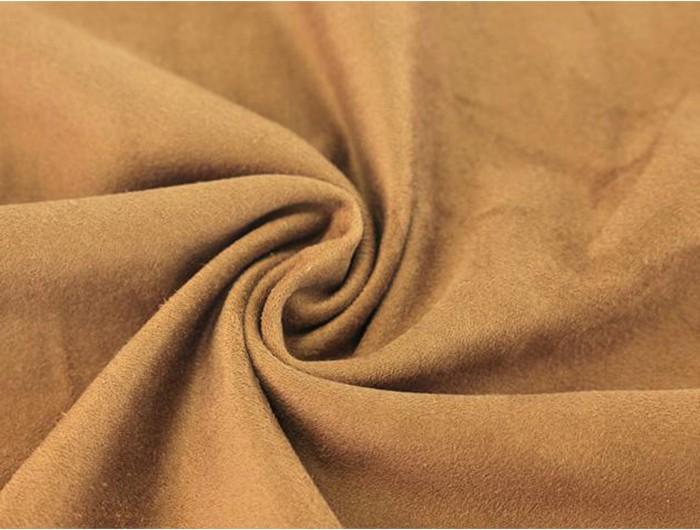
Faux suede fabric
How cute are muntjacs?
Muntjacs are animals that have existed in China since ancient times. With the development of modern urbanization, ordinary people can only go to the zoo if they want to see lively little muntjacs. If you are lucky, you may encounter them while hiking or hiking. An elf in the mountains and forests.
The reason why the Chinese name of the little muntjac has the word "小" is because they are really very small. The height of the adult muntjac is about 43-52 cm, the body length is 70-87 cm, and the weight is 9-18 kg. If the numbers are described in detail, it is about the same height as an adult husky, a little longer, but much lighter than a husky.
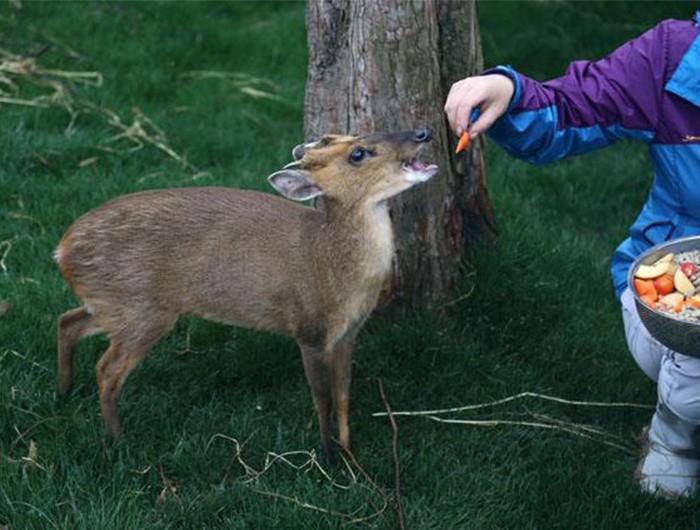
Adult muntjac at Shanghai Zoo
The adult muntjac is like a dog, while the pups are even smaller and have "plum blossom spots" on their bodies, making them twice as cute.
There are pictures to prove it:

The "smallness" of the little muntjac is also reflected in another aspect - timidity.
Muntjacs are timid and a bit silly by nature. Once frightened a little too much, they may be frightened to death, paralyzed in place, have a stress reaction, and may even be frightened to death due to excessive fright that causes their heart to beat too fast.
According to interviews with early years of legal muntjac breeding farms in the South, you need to be more careful when raising muntjacs than raising other animals. You must not frighten them too much. Otherwise, these small animals are likely to develop stress disorders and become unable to function due to emotional stress. Eat and sleep well, and some even bang their heads against the wall to harm themselves.
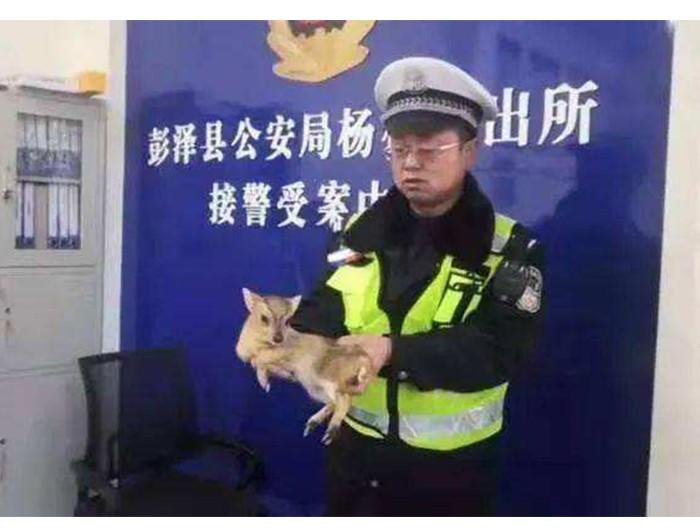
When you have the opportunity to see a young muntjac up close at the zoo, you can pay close attention to the male muntjac.
Like many species in the deer family, muntjacs have horns only in males. But the horns of muntjacs are different from common deer antlers. They are short and curved inward. The tips of the horns of small muntjacs are very bifurcated. From some angles, they even look a bit like horns.
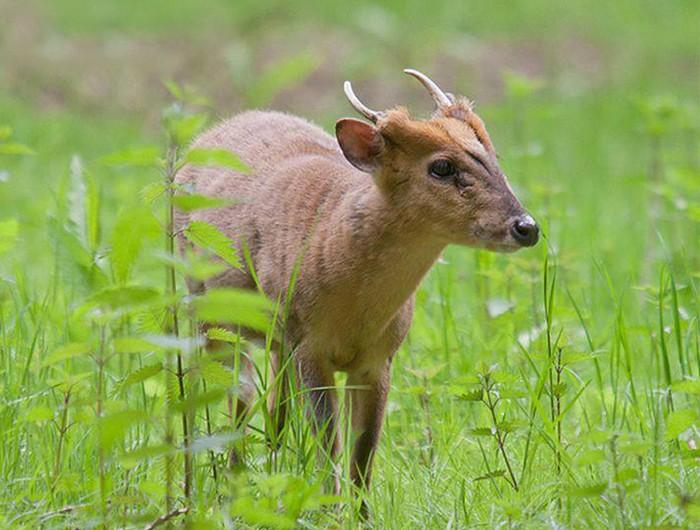
In addition, the male muntjac has one of the most unique features, which can only be seen if you look closely.
They have two sharp canine teeth similar to those of carnivores. They are usually covered by their lips, and occasionally the tips of the teeth can be seen.

The exposed canine teeth of a male muntjac
As a pure herbivore, the muntjac's two canine teeth are obviously not used for eating. Only male muntjacs have canine teeth, which means that their only function is to fight with competitors during courtship. When the head and horns of each other fail to determine the winner, the male muntjacs will show these two long canine teeth. canine teeth to bite the opponent.
As for how long it is, you can feel it by looking at the skull of a male muntjac.
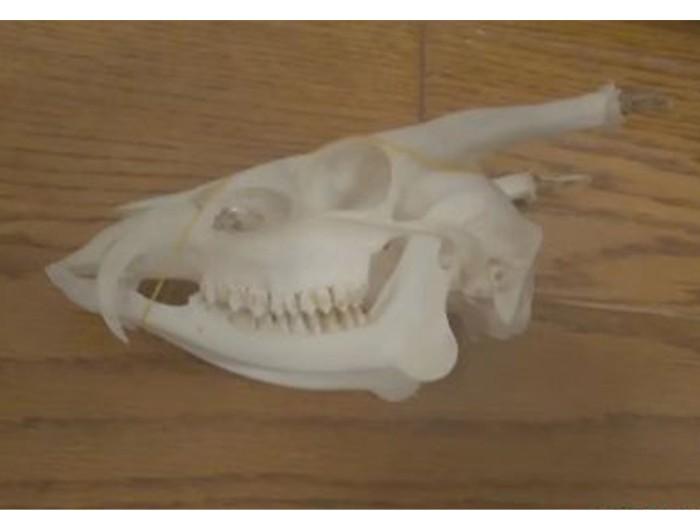
Skull specimen of a male muntjac
In addition to their small size, unique calls, and male canine teeth, muntjacs also have another feature that distinguishes them from other deer, and that is the presence of two gland openings on their faces.
One is the "infraorbital gland" located under the inner corner of the eye, and the other is the "frontal gland" on the forehead and at the end of the corner. Both glands are used to secrete odor, and each has a different function - marking. Territory and spouse, declaration of estrus, warning of danger, etc., the same kind of people know what the other person wants to "say" as soon as they hear it.
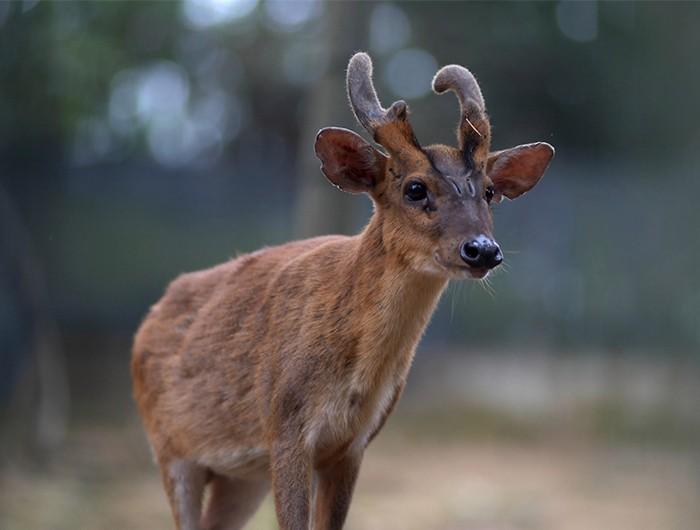
The protected little muntjac
Although the custom of hunting muntjacs has been common since ancient times, with the development of the times, people have now realized the importance of protecting wild animals. In 2000, wild muntjacs were included in the national list of three species of animals. Individuals without approval Catching, eating, and trading up to a certain amount is illegal. Once discovered, the police will educate the police, fine them, and even detain them.

The number of wild muntjacs is not very small. After becoming three species of animals, you can often see news about people from all over the world rescuing lost muntjacs.
For example, on November 1 this year, a lost little muntjac cub broke into a supermarket in Huangshi City, Hubei Province. It was watched by nearby residents because it was too cute, but the little guy ended up being disappointed. Even more nervous, the shop owner finally called the police and the wildlife protection station released the animal.
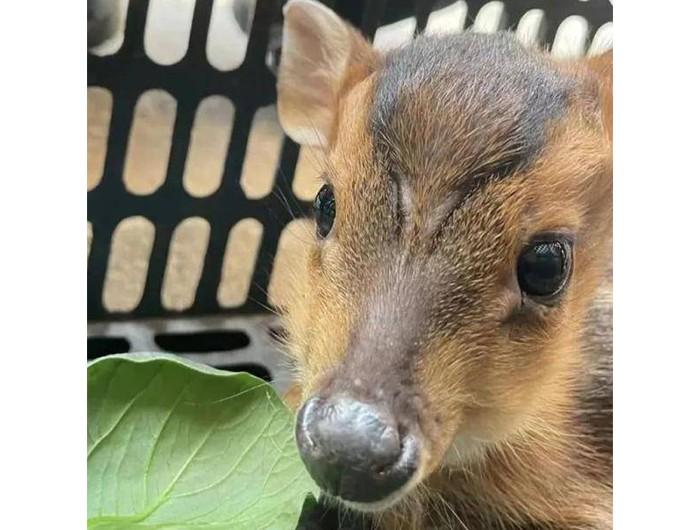
In the 1980s, our country successfully carried out artificial breeding of muntjacs. Nearly twenty years later, at the beginning of this century, muntjac farms began to appear in the southern region. The main purpose was meat and skin, which also brought farmers considerable economic profits.
But after all, muntjacs are not mainstream economic domestic animals that have been domesticated for a long time. The four domestic muntjacs of the genus Muntjac still belong to the definition of wild animals.

After the COVID-19 epidemic began, in early 2020, the Standing Committee of the National People's Congress issued a decision on the consumption and trade of wild animals, which stipulated a complete ban on the consumption of nationally protected "terrestrial animals with important ecological, scientific and social value". "Wild animals" (commonly known as "three animals") and other terrestrial wild animals, including artificially bred and artificially raised terrestrial wild animals.
In October 2020, the State Forestry and Grassland Administration issued the "Notice on Regulating the Scope of Category Management of Fasted Wild Animals", which prohibits the breeding of muntjac for food purposes, except for special circumstances such as retaining appropriate species sources. So now, except for occasional encounters in the forest, you can only see muntjacs in qualified zoos and breeding grounds. Otherwise, it is illegal - especially on the dining table.
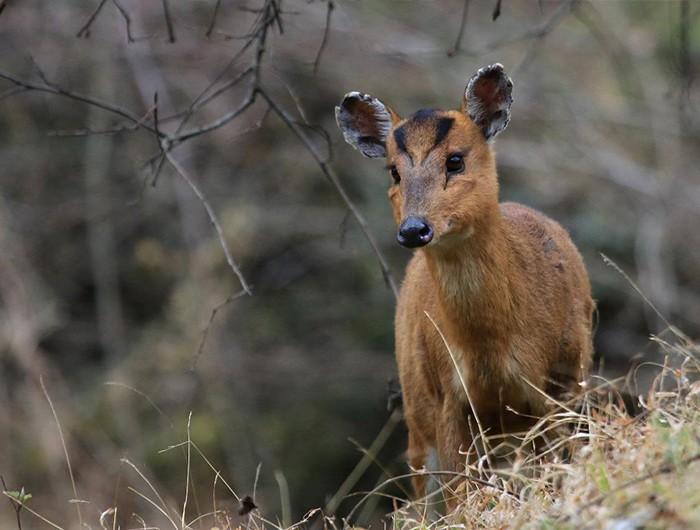
Such a unique and cute little muntjac is not only not a mysterious creature that brings bad luck to people's homes in the legend of mountain people, but also an indispensable creature on the land of our country. Only nature should be their best destination.
Articles are uploaded by users and are for non-commercial browsing only. Posted by: Lomu, please indicate the source: https://www.daogebangong.com/en/articles/detail/hu-bei-huang-shi-jing-xian-huang-ji-chuan-shuo-hui-dai-lai-xue-guang-zhi-zai-xian-shi-zhong-que-bi-lao-shu-hai-dan-xiao.html

 支付宝扫一扫
支付宝扫一扫 
评论列表(196条)
测试